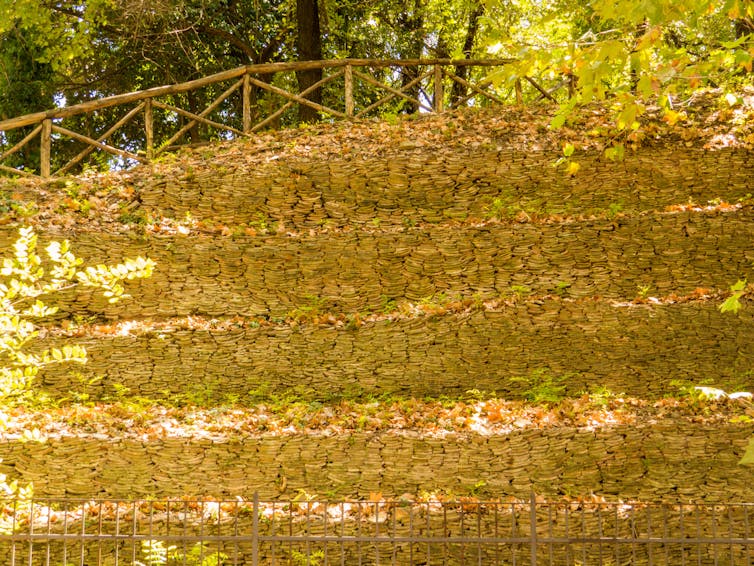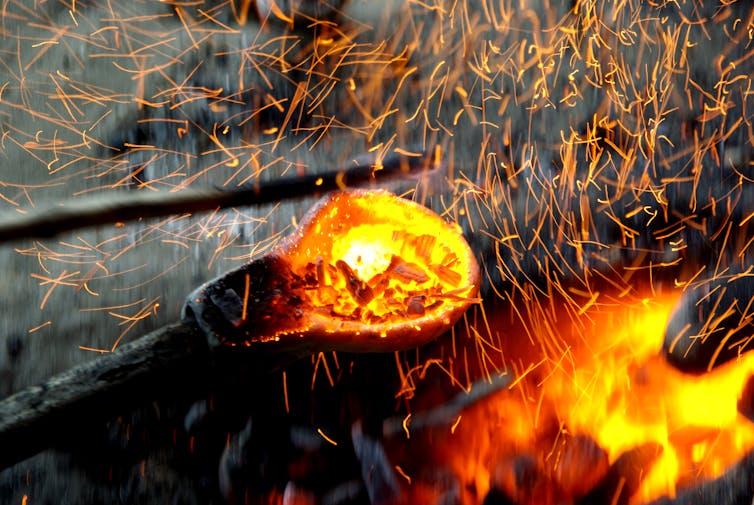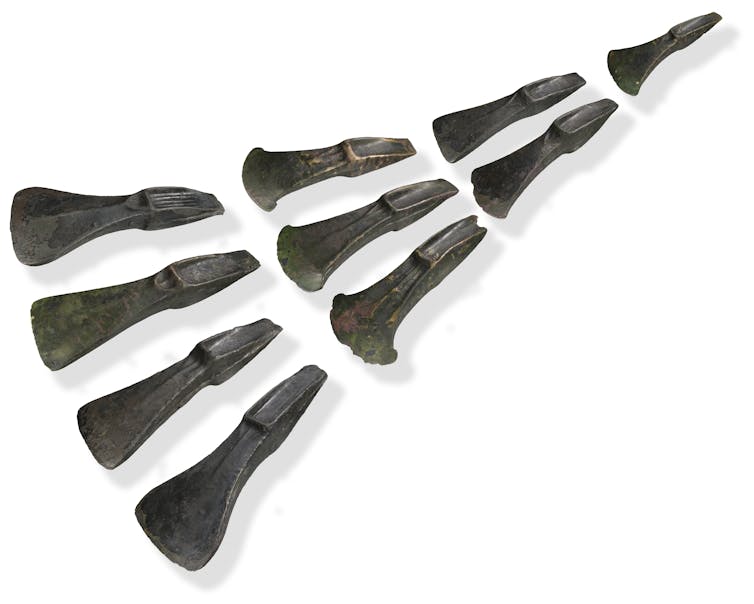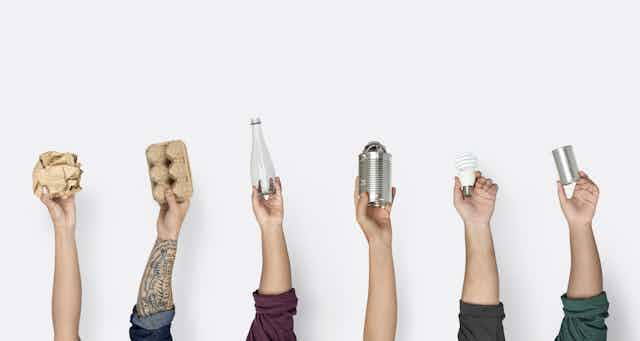The circular economy is typically seen as the progressive alternative to our wasteful linear economy, where raw materials are used to make the products that feed today’s rampant consumerist hunger, which are then thrown away. The idea of the circular economy only took off in the 1980s, but this doesn’t mean that the practices at the core of a circular economy, such as repairing, recycling, refurbishing, or repurposing, are equally novel. All of these strategies have the aim of keeping materials in use – whether as objects or as their raw components – for as long as possible. And all are hardly revolutionary.
The repurposing of objects and materials may be as old as tool use itself. In Palaeolithic times, smaller flint tools were made from old hand-axes. People in the Neolithic period had no problem reusing standing stones to construct their tombs, such as seen in Locmariaquer in France. Even ceramics, made from clay and therefore available in abundance, were frequently recycled. Old pottery was often ground down to powder and used in the clay for new pots. On Minoan Crete, this ceramic powder, known as grog, was also used to manufacture the mudbricks from which houses were built.
At the Bronze Age site in Hungary where I excavate, spindle whorls made from broken pot fragments turn up regularly. Large stones at this site pose an interpretative dilemma because of their continuous reuse and repurposing, from grindstone to anvil and doorstep to wall support. In fact, up until the 20th century, repair, reuse, and repurposing were common ways of dealing with material culture. The dominance of the wasteful linear economy is a real historical anomaly in terms of resource use.
But we should be careful not to fall into the trap of the “noble savage”. Our ancestors were no ecological saints. They polluted their surroundings through mining, burned down entire forests, and they too created massive amounts of waste. Just look at Monte Testaccio, a large artificial hill in Rome made up entirely out of broken amphorae.

When things are in abundance, people easily accept a wasteful and exploitative attitude. But for most of the past, most things were not in abundance, and so a core practice of a circular economy was adopted. This did not happen due to ideological motivation, but out of necessity.
Prehistoric recycling
Archaeologists typically don’t use the terminology of the circular economy, and describe the above examples simply, as reuse. This might partly explain why the deep roots of core practices of the circular economy are not discussed more widely. The same is also true of recycling.
When one adopts a very broad definition of recycling (thinking of it, for example, as the use of previously discarded artefacts), the origins of this practice can be traced all the way back to the Palaeolithic period. But let’s focus here on the understanding of recycling as is employed today. This is a practice in which waste (used objects) is completely converted, becoming the raw material of new products.
This practice of complete transformation also entered the repertoire of human behaviour far earlier than you may think. It became the core practice of an economy as long ago as the Bronze Age.

From about 2500BC, prehistoric people started to combine copper and tin on a regular basis, making metal known as bronze. The mass adoption of this artificial material caused significant shifts. Societies reoriented themselves economically because making bronze meant moving materials over long distances. Connecting sources with end users led to an intensification of trade. For these reasons, the Bronze Age is considered to be a formative epoch in the formation of Europe, in which we witness the emergence of pan-European exchange networks and large-scale trade.
Bronze also made people think in new ways. The process of metalworking differs markedly from other, earlier, crafts. Wood and stone carving involve the removal of material, which is why they are known as reductive technologies. Basketry, weaving, and pottery, meanwhile, are additive technologies. Bronze is different in that it is a transformative technology. The raw material is melted down to a liquid state and poured into a mould. Moulds were the very first blueprints, documenting the design of an object to be produced – and reproduced. This may not sound very exciting to us now but for the prehistoric people involved this must have a been a groundbreaking way of working materials.
Just imagine, if your stone axe broke, you could repurpose the pieces, but you would not be able to remake that axe. In contrast, if your bronze axe broke, you could remelt it and produce the same axe with the same quality, again. Recycling, as a core economic practice, was invented in the Bronze Age.

Circular economies
Bronze was not the first metal to be used in such a way; the origins of metal use start with pure copper being hammered into shape. But it is only at the beginning of the Bronze Age that recycling starts to take place on a large scale.
From the Middle Bronze Age onwards, all over Europe, bronze was being recycled. We know this because archaeologists have analysed the metal composition of hundreds of objects, showing the depletion of certain elements, as a result of frequent recycling. In addition, “old” metal was traded. A shipwreck discovered off the coast of Dover carried a large amount of French bronze objects dated to 1100BC, destined to be recycled in the UK.
As a political term, we might want to keep the circular economy in the present, but the practices that are part of it have long been part of human existence. In this respect, the Bronze Age could be seen as the first example of a circular economy in practice. Bronze was a main material of this period, and its economy revolved around recycling. Recognise this, and we start seeing that it is not the circular economy that is novel. Rather, it is the linear, and wasteful economy that is the anomaly.
The beauty of this is that we can put the past to good use. The core values of a circular economy are rooted in our past and in this manner, they can help shape and inspire a modern craftsmanship that fundamentally should revolve around sustainability and durability.

